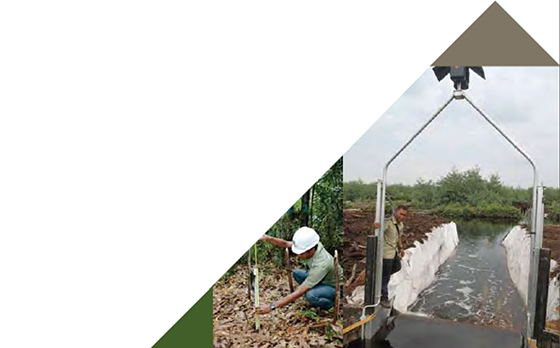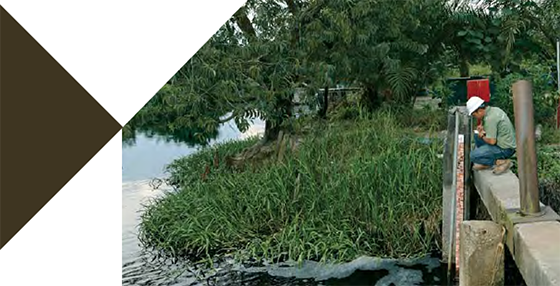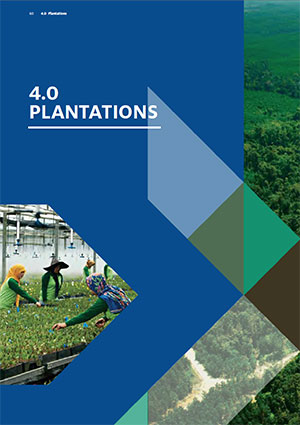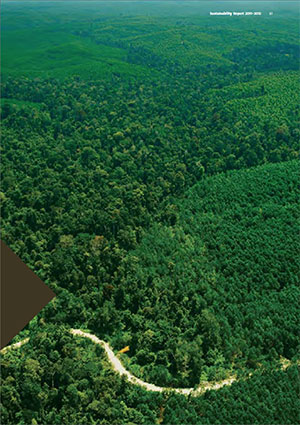The fact APRIL has significant operations located on peatland brings additional responsibilities in land management. Our approach to managing peatland concessions is “real world”, based on a “total landscape” perspective and on best-available science. It includes efforts to minimise greenhouse gas (GHG) emissions from peat through careful land-use planning and detailed implementation that includes hydrology management.
Effective peatland management requires a “total landscape” approach. This involves protection and buffering of central peat domes to guard against drainage impacts. Our approach, based on landscape hydrology, aims to protect the critical headwaters of raised peat domes, ensuring connections to major riparian corridors.
In locations such as the Kampar Peninsula and the island of Pulau Padang, our concessions are configured to assist in preserving and protecting central peat dome areas located outside our concessions. Water tolerant species are planted. Buffer zones are created to protect peat domes and other set-aside natural areas including those outside of our concessions, from impacts arising from active water management within the plantations. This is the “total landscape” management approach.
APRIL’s peatland management approach incorporates the following principles:
- Forests and carbon sinks in peatland can only be sustainably managed if the hydrological system is protected or rehabilitated. This is of importance for conservation, and is also vital for longterm economic production on peat land
- Degraded land which may be of relatively low conservation value and hold marginal potential for agriculture, can nevertheless hold considerable carbon deposits. Such land is managed to retain and rebuild treed cover, to exclude fire and to maintain or rehabilitate the hydrology
- Management is designed to maximize fiber production from designated plantation lands, leaving designated setaside lands both within and adjacent to concessions as extensive and as intact as possible
- On the most degraded lands, create fibre plantations that provide livelihood opportunities for local communities and so reduce the poverty that drives degradation and loss of forest cover, while also supporting small local business development

The “total landscape” approach is applied holistically right across our concessions, to community lands, plantations, conservation and other areas like buffers and local-use forest.
It should also be noted that consistent expansion in the area of APRIL’s plantations over the 20 years that we have been planting, means that APRIL’s concessions can be considered a significant carbon storage. By comparison, some government backed climate mitigation programs have horizons of just 10 years.
It is APRIL’s firm view that our approach provides an effective alternative to the continued degradation through illegal logging and human encroachment that would occur if APRIL were not managing the peatland areas covered by our concessions. This is the “real world” position.
Some stakeholders have expressed viewpoints that in the absence of legitimate professional forestry sector activities on peatland, these areas would exist in a pristine condition and carbon sequestration would be optimized. However, the reality today is that just 10% of the original peatland forest in Riau remains in a semi-intact state (with 50% or more of original canopy trees remaining). Illegal logging, drainage and slash and burn clearing are still widespread today on the remaining unmanaged peat forests, and consequently these forests continue to degrade and reduce in area.
APRIL has learnt from experience of nearly two decades that active management involving a human presence on the land, across the landscape, is the only effective way to curtail carbon emissions.
APRIL believes the responsible approach is to play an active role in managing forest areas that are subject to these risks.


